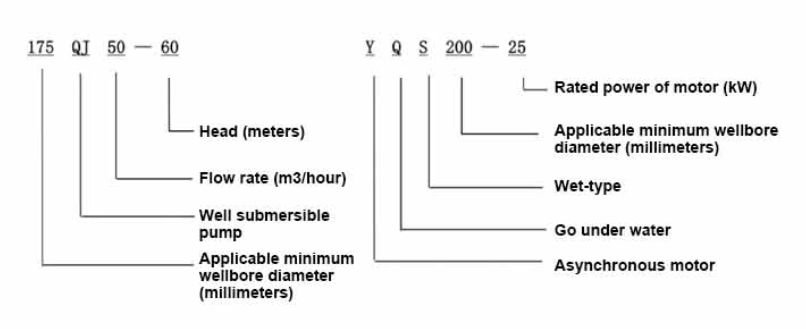Dec . 09, 2024 16:57 Back to list
Factors Influencing the Lifespan of Submersible Well Pumps and Their Maintenance Tips
How Long Does a Submersible Well Pump Last?
Submersible well pumps are essential components for extracting water from underground aquifers. Unlike other types of pumps that sit above the ground, submersible pumps are designed to be submerged below the water surface, making them effective for deep wells. However, one common question that homeowners and potential buyers often ask is “How long does a submersible well pump last?” The answer to this question depends on several factors, including the pump's design, installation, usage, and maintenance practices.
Average Lifespan
On average, a submersible well pump can last anywhere from 8 to 15 years. However, some pumps may function effectively for over 20 years with proper care and maintenance. Various factors influence the lifespan of a pump, making it crucial for users to understand what they can do to maximize its longevity.
Quality and Design
The quality of the pump is one of the primary factors that influence its lifespan. Pumps constructed from durable materials, such as stainless steel and high-quality plastic, tend to last longer than those made from inferior materials. Brands that have a proven track record for reliability and those that come with extended warranties are typically better investments.
Depth and Installation
Another important factor is the depth of installation. Submersible pumps are generally used for wells that are deeper than 25 feet. If a pump is installed too deeply or in a very corrosive environment, it may face more wear and tear. Correct installation is also crucial; if a pump is not installed according to the manufacturer's specifications, it may experience problems that can lead to premature failure.
Usage Patterns
how long does a submersible well pump last

The frequency and manner in which the pump is used can also greatly affect its lifespan. For example, pumps that frequently cycle on and off, or that operate under high demand, may wear out more quickly than those running consistently under optimal conditions. It's essential to ensure that the pump's capacity matches the household’s water usage needs to prevent overworking the unit.
Water Quality
The quality of the water being pumped has a direct impact on pump longevity. Water that contains high levels of sediment, minerals, or corrosive elements can cause significant wear on pump components, leading to a shorter lifespan. Regularly testing the water for quality and installing a filtration system when necessary can help mitigate these issues.
Maintenance Practices
Maintenance is a critical aspect of prolonging the life of a submersible well pump. Users should be proactive about routine maintenance, which includes checking electrical connections, inspecting for unusual noises, monitoring the pressure switch, and ensuring that the pump is operating at the correct temperature. Periodic cleaning of the pump and checking the well for any signs of clogging or sediment buildup can also help maintain performance.
Indicators of Wear
Being aware of the signs that a pump may be nearing the end of its lifespan is essential for homeowners. Common indicators include decreased water flow, strange noises coming from the pump, frequent cycling, and an increase in energy bills. If any of these signs are present, it may be time to consult a professional for an assessment or consider replacing the pump.
Conclusion
In summary, submersible well pumps can last between 8 to 15 years on average, and proper care can extend that lifespan significantly. The quality of the pump, installation depth, water quality, usage patterns, and maintenance practices are all vital factors that influence longevity. Homeowners should invest in a high-quality pump and be proactive about maintenance to maximize the functional life of their submersible well pump. Regular checks and balances will not only save costs in the long run but will also ensure a continuous supply of water, which is essential for any household. By understanding the factors that affect a pump's lifespan, users can make informed decisions and take appropriate actions to maintain their systems effectively.
-
Water Pumps: Solutions for Every Need
NewsJul.30,2025
-
Submersible Well Pumps: Reliable Water Solutions
NewsJul.30,2025
-
Stainless Steel Water Pumps: Quality and Durability
NewsJul.30,2025
-
Powerful Water Pumps: Your Solution for Efficient Water Management
NewsJul.30,2025
-
Oil vs Water Filled Submersible Pumps: Which is Better?
NewsJul.30,2025
-
Deep Well Pumps: Power and Reliability
NewsJul.30,2025
-
 Water Pumps: Solutions for Every NeedWhen it comes to handling dirty water, the dirty water pump is a must-have.Detail
Water Pumps: Solutions for Every NeedWhen it comes to handling dirty water, the dirty water pump is a must-have.Detail -
 Submersible Well Pumps: Reliable Water SolutionsWhen it comes to ensuring a reliable water supply, submersible well pumps are a top choice.Detail
Submersible Well Pumps: Reliable Water SolutionsWhen it comes to ensuring a reliable water supply, submersible well pumps are a top choice.Detail -
 Stainless Steel Water Pumps: Quality and DurabilityWhen it comes to choosing a water pump, the stainless steel water pump price is a crucial factor.Detail
Stainless Steel Water Pumps: Quality and DurabilityWhen it comes to choosing a water pump, the stainless steel water pump price is a crucial factor.Detail
